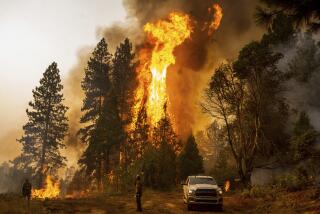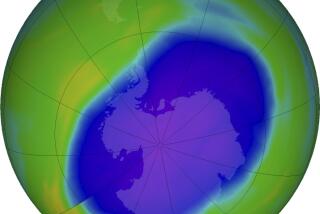Global Warming
- Share via
You are to be commended for using the occasion of the Nobel Prize awards to point out that global warming and ozone depletion are not in any serious scientific dispute (editorial, Oct. 13). However, your editorial furthered a common and very much mistaken idea that global warming and ozone depletion are the same thing.
Global warming is the result of the emission of “greenhouse gases,” principally carbon dioxide (produced mainly by burning oil, coal, rain forests and natural gas) and methane (from landfills, coal mines and other sources). Global warming threatens to raise the temperature of the Earth’s atmosphere by a crucial few degrees, changing weather patterns and eventually melting the polar ice caps and raising the global sea level. Reducing the use of hydrocarbon fuels and stopping the destruction of rain forests are the key remedies here.
Ozone depletion, by contrast, is caused by the emission of CFCs (chlorofluorocarbons), which release chlorine into the stratosphere, and a few other similar compounds, such as halons, which release bromine. CFCs are slowly being phased out, but even if we stopped worldwide production today, the CFCs currently being released will take eight to 12 years to reach the stratosphere, and, once there, will last up to 150 years. Ozone depletion is the cause of increased UV radiation; if changes aren’t made immediately, 150 million cases of skin cancer are predicted in the U.S. alone in the next 80 years.
Ozone depletion and global warming do overlap somewhat in their effects, in that increased UV radiation decreases photosynthesis, meaning that more carbon dioxide stays in the atmosphere. Also, chlorine and bromine are heat-trapping gases that together account for 15-20% of global warming.
JON COOKSEY, Woodland Hills






